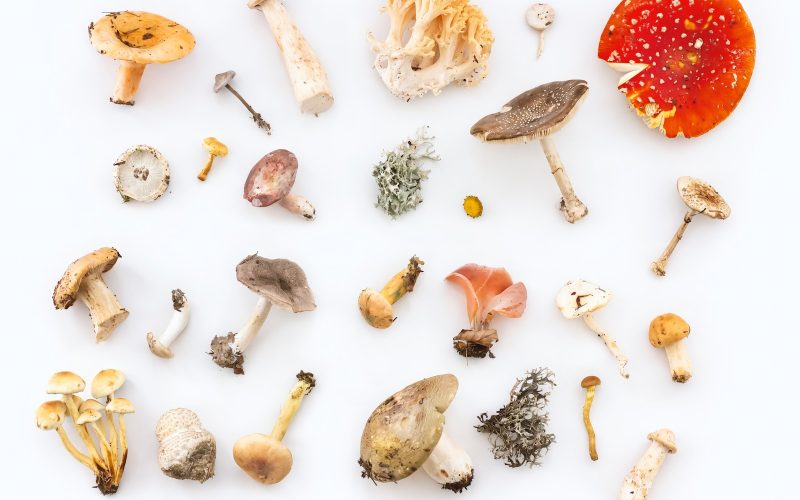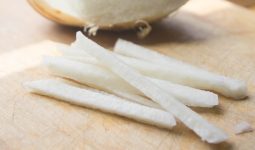First, know that there are different types of mushrooms in the world! Before looking more closely at a mushroom’s classification, we must first define what a mushroom is.
The fleshy body of a fungus is a mushroom. It produces spores, which are the mushroom’s actual fruit and seeds.
They may flourish anywhere with a food source, including the ground and soil bags.
Mushrooms are frequently considered to be plants. They are distinct from plants at the top of the taxonomic hierarchy.
Mushrooms are split from the fungus kingdom after belonging to it. From that moment on, all mushrooms belong to the Basidiomycota Phylum.
One of the two divisions of the phylum Basidiomycota belongs to the Dikarya subkingdom.
These divisions make up the Fungus kingdom’s “upper fungi,” as they are frequently referred to.
The term “Basidiomycetes” refers to all members of this phylum. To the different types of mushrooms, we’ll get to know them soon!
Edible Vs Poisonous Mushrooms
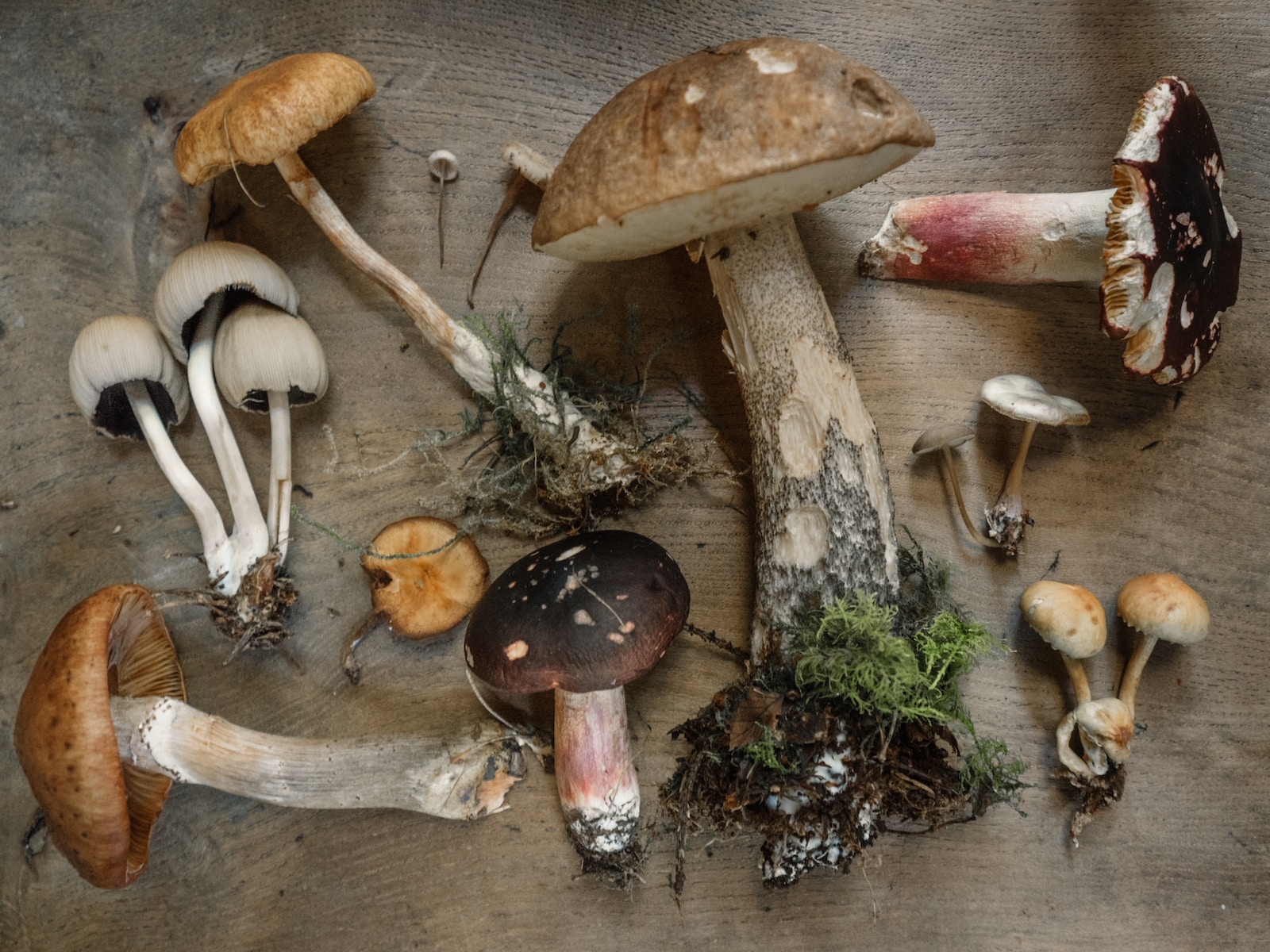
We shall start with the qualities of edible mushrooms and move on to dangerous species as we delve deeper into the world of mushroom species.
Some people straddle the line. For instance, not all of these are harmful or dangerous.
Instead, when made properly, they can have advantageous qualities in the medical area, or people can use those for harmful, drug-related purposes.
Since these latter species vary and many of their applications are speculative, we won’t discuss them here.
Now, let’s get to know the different types of mushrooms!
Different Types of Mushrooms
1. Angel Wing

Starting our list of the different types of mushrooms, the Angel Wing mushroom (Pleurocybella porrigens) would be the most attractive if such a thing existed.
They emerge from the base of trees and have a thin, flat top that gradually dips with age.
They are nearly white. The color of the mushroom may somewhat change to yellow as it ages.
With its poisons, this fungus is cunning. Its exact toxicity is yet unknown, and not everyone who consumes it becomes ill.
However, it can result in deadly encephalopathy, particularly in those with pre-existing illnesses. When foraging, use caution because they resemble edible oyster mushrooms.
2. Sulfur Tuft

The shade of yellow covering the mushroom top is how Sulfur Tuft (Hypholoma fasciculare) gets its name.
The mushroom’s gills turn from yellow to green as it gets older. Since it often just causes intestinal discomfort, this fungus only has a modest level of toxicity.
However, extreme circumstances might result in paralysis or even eyesight impairment. It is the second on this list of the different types of mushrooms.
3. Deadly Webcap
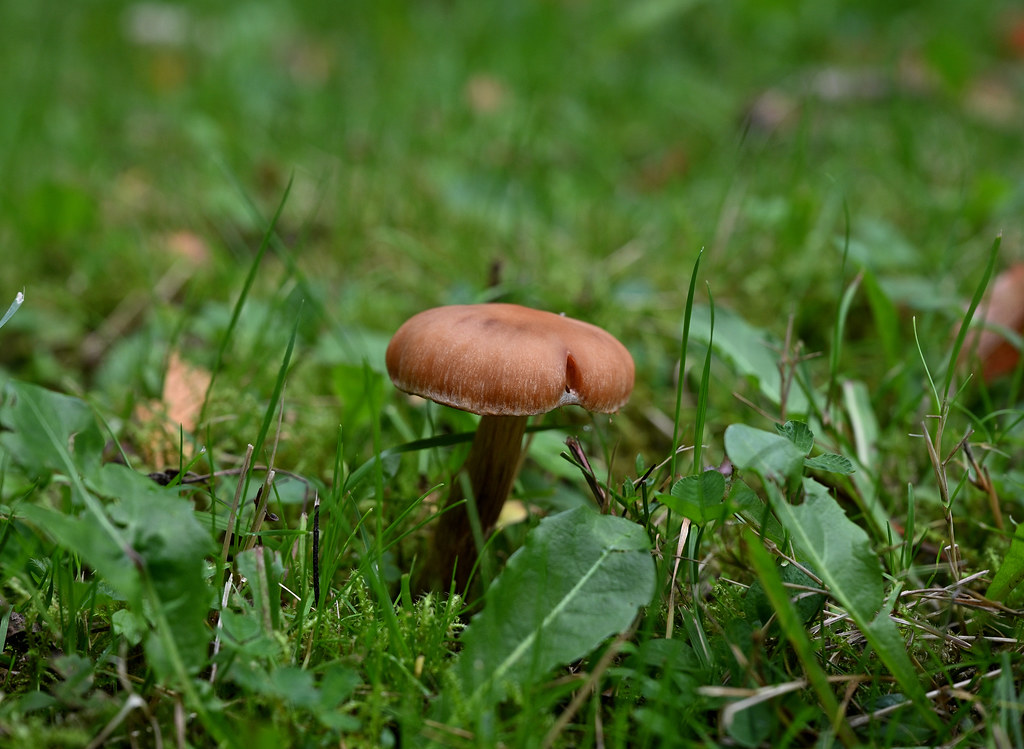
Fools and Deadly Webcap (Cortinarius rubellus) are highly poisonous. Kidney failure is the most typical sign of this mushroom poisoning.
A kidney transplant will be necessary if the mushroom is ingested in excess. These are different types of mushrooms that should be avoided.
These mushrooms have concave golden brown caps with brown stems that are speckled in the middle and have a ring around them.
They resemble the edible Funnel Chanterelle and Waxy Cap in appearance.
4. Lilac Bonnet
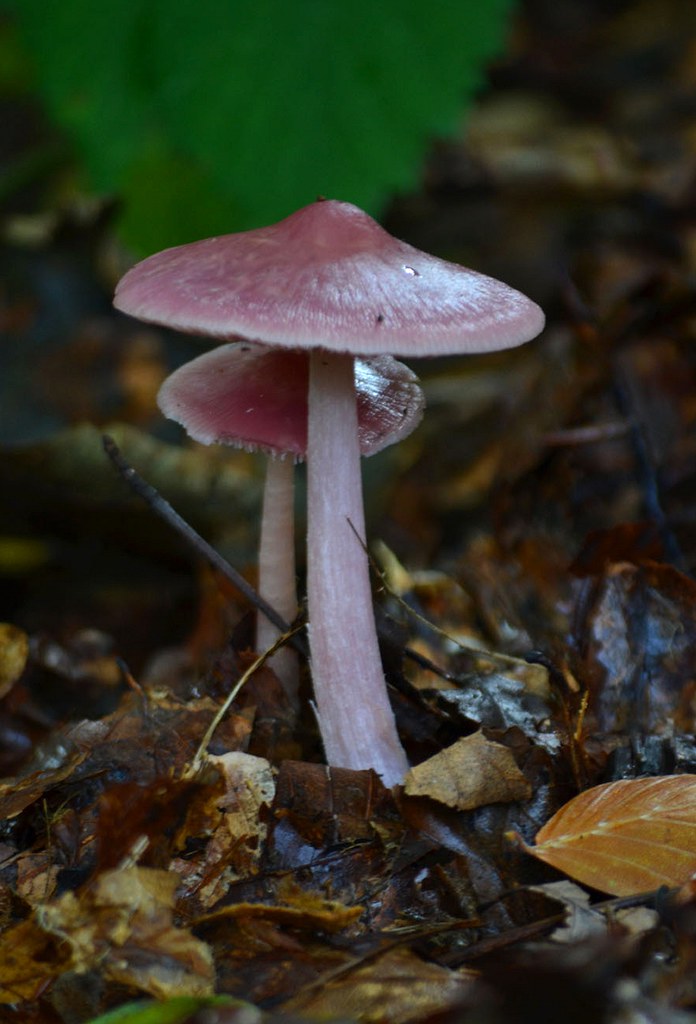
The delicate purple tint of the Lilac Bonnet’s (Mycena Pura) cap and stem makes it distinctive.
Frequently, the gills are milky white. The mushrooms have a wide cap and can glow under certain conditions.
The effects of eating them are still largely unclear, even though they are known to contain poisons.
They resemble the Wood Blewit mushroom in appearance. They are also on our list of the different types of mushrooms you should know!
5. Brain Mushroom

Because they resemble one other, the False Morel is also known as the Brain Mushroom (Gyromitra esculenta).
Interestingly, this mushroom contains a toxin that renders it fatally toxic when consumed raw yet delicately when cooked.
The signs of poisoning include nausea and diarrhea. In severe circumstances, a coma and maybe death will occur after this.
This is just the tip of the iceberg on this list of the different types of mushrooms worldwide!
6. Button Mushroom

Some of the most popular mushrooms consumed worldwide are button mushrooms (Agaricus bisporus).
There are brown and white button mushrooms. They are Al’s, one of many different types of mushrooms you should know.
Along with brown, the color represents the stage of immature mushrooms. They are frequently referred to as just “buttons” when they are white.
They are frequently marketed as chestnut mushrooms when they become brown. When fully grown, they are sold under the name Portobello mushrooms.
In this condition, their cap will be between 4 and 6 inches (10 to 15 centimeters) in size and will have significantly increased.
Compared to other mushrooms, this mushroom’s taxonomic history is exceptionally convoluted. Since 1946, it has belonged to the Agaricus genus.
7. Satan’s Bolete
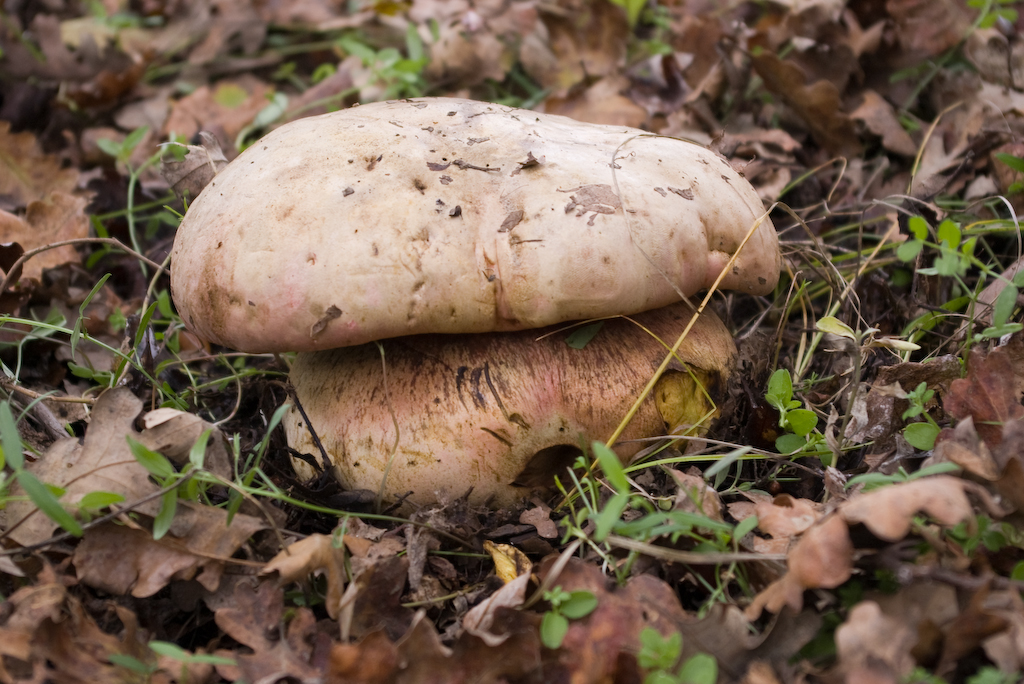
Satan’s Bolete (Rubroboletus Satanas) appears to be worthy of the name given to it.
It features a deformed creamy cap after a brilliant red stem. If that wasn’t enough to identify it, cutting into it causes it to turn blue.
These squat mushrooms are deadly. However, they are not among the poisonous mushrooms that are more frequently poisonous due to appearance.
Though rarely fatal, they can produce intense vomiting and diarrhea. We are yet to start this list of different types of mushrooms.
8. Emetic Russula

The Pigskin Poison Puffball is another frequent name for this fungus that is more aesthetically appealing.
The exterior of the mushroom has the appearance of pig skin, and it has a puffball-like form.
Digestion problems may result from the mushroom. The spores can irritate your lips, nose, and eyes on touch, so even breaking them open to release them can be unpleasant.
9. Jack O’Lantern
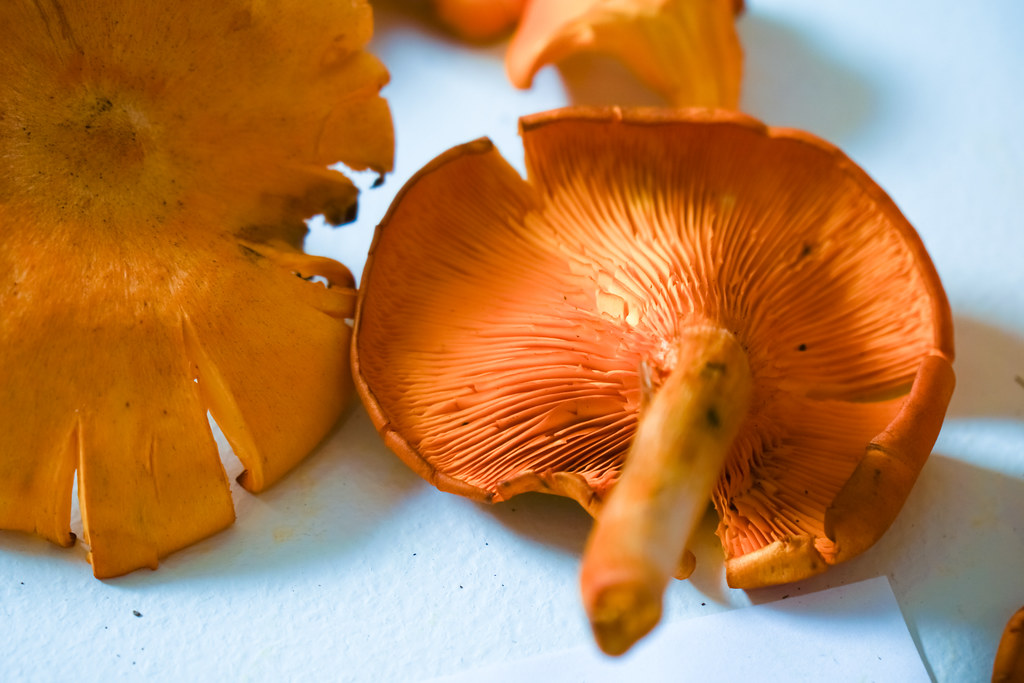
Large, orange, and frequently growing at the base of hardwood trees is the Jack O’Lantern mushroom (Omphalotus illudens). It resembles Chicken-in-the-Woods a lot.
In addition, it stands out thanks to its fleshier look and propensity to form larger clusters.
When ingested, they rarely result in death but instead, diarrhea, cramps, and vomiting. It is likewise one of the different types of mushrooms!
10. Ivory Funnel

The Clitocybe dealbata, also known as the Ivory Funnel’s cap, has a funnel-like form and is primarily white.
Most of Europe and North America, where they are most prevalent, have grassy regions like lawns and meadows where they can grow.
Because they make you sweat after eating them, they are also known as Sweating mushrooms.
Due to the concentration of the poison muscarine, these mushrooms can be rather lethal. Salivation and sweating are typically significant symptoms.
You may experience abdominal pain and further digestive problems in the worst scenarios. Overeating on the list of different types of mushrooms can result in death.
11. Oyster Mushroom

Some of the simplest types of mushrooms for home growers to cultivate are oyster mushrooms(Pleurotus ostreatus).
Compared to the more well-known button mushrooms, they have a unique appearance.
Since they resemble the interior of an oyster, their form is how they received their name. But don’t be concerned.
They taste nothing like it. Some people consider the mild flavor of oyster mushrooms to be slightly sweet.
Since their gills develop on their exterior under their cap rather than being protected, they also have a distinctive texture.
Specific sectors also use Oyster mushrooms in the mycoremediation of contaminated environments.
Due to their form, the oyster mushroom’s genus is translated as “side ear.” They frequently flourish on dead hardwood trees.
Their ability to be a weak parasite of living herbaceous plants is another characteristic that sets them apart from other organisms.
They may capture and consume nematodes by paralyzing them with toxins because they are nematophagous fungi.
12. False Champignon

Another hazardous mushroom in this family on this list of different types of mushrooms is the Clitocybe one.
It resembles the Ivory Tunnel, another hazardous fungus. It can also be mistaken for the palatable Fairy Ring Champignon, though.
It even creates fairy rings in grassy meadows like the edible mushroom.
Fortunately, death from eating the fungus is infrequent. When taken, it does, however, result in perspiration and drooling.
13. Hedgehog Mushroom
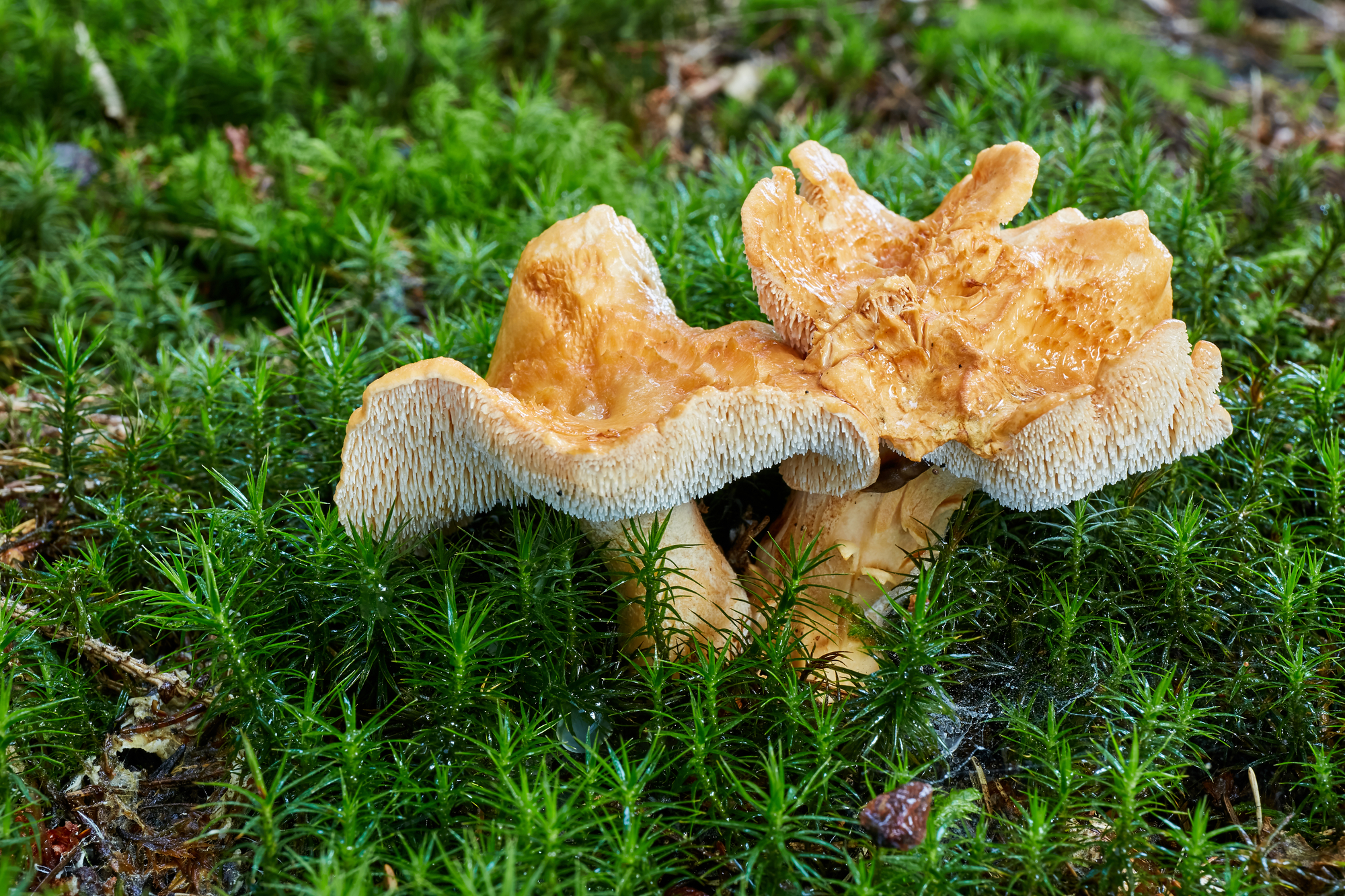
A golden mushroom, the hedgehog (Hydnum repandum) or sweet tooth, is called that of the different types of mushrooms.
Its gills resemble quills more so. This characteristic helps to distinguish them and gives them their famous name.
These mushrooms have an exciting flavor character, which makes them a well-liked edible type.
Like chanterelles, hedgehog mushrooms have a peppery flavor, but they also have smokier overtones.
Even after being cooked, their texture is slightly crunchier than that of the majority of mushrooms.
Your mushrooms may taste a bit bitter if you collect them later in the year. However, this can be eliminated with appropriate heat during preparation.
Harvesting hedgehog mushrooms is risk-free because they don’t have any dangerous clones that may trick you.
14. Destroying Angel
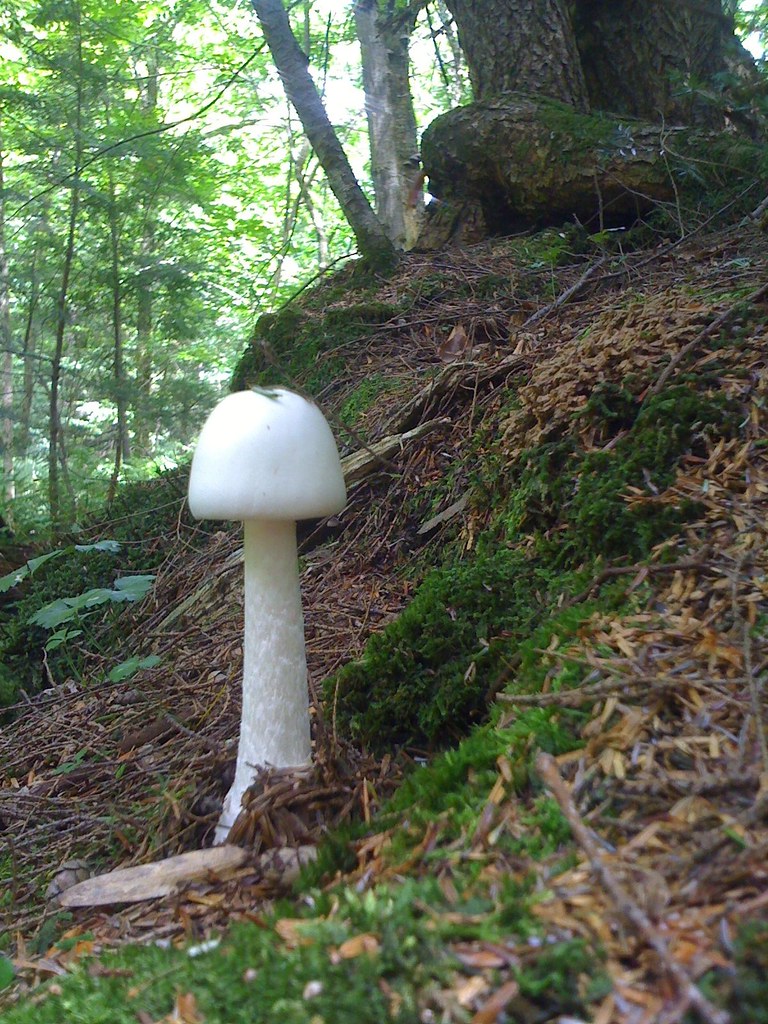
From cap to stem, the Destroying Angel mushroom (Amanita bisporigera) is all white. By this term, various mushrooms could be referred to.
The Destroying Angel, however, is most frequently associated with A. bisporigera.
This one is one of the world’s most dangerous types of mushrooms. They flourish in both grassy fields and woods.
They are readily confused with the edible button mushroom, horse mushroom, and meadow mushroom.
15. Scaly Vase Chanterelle
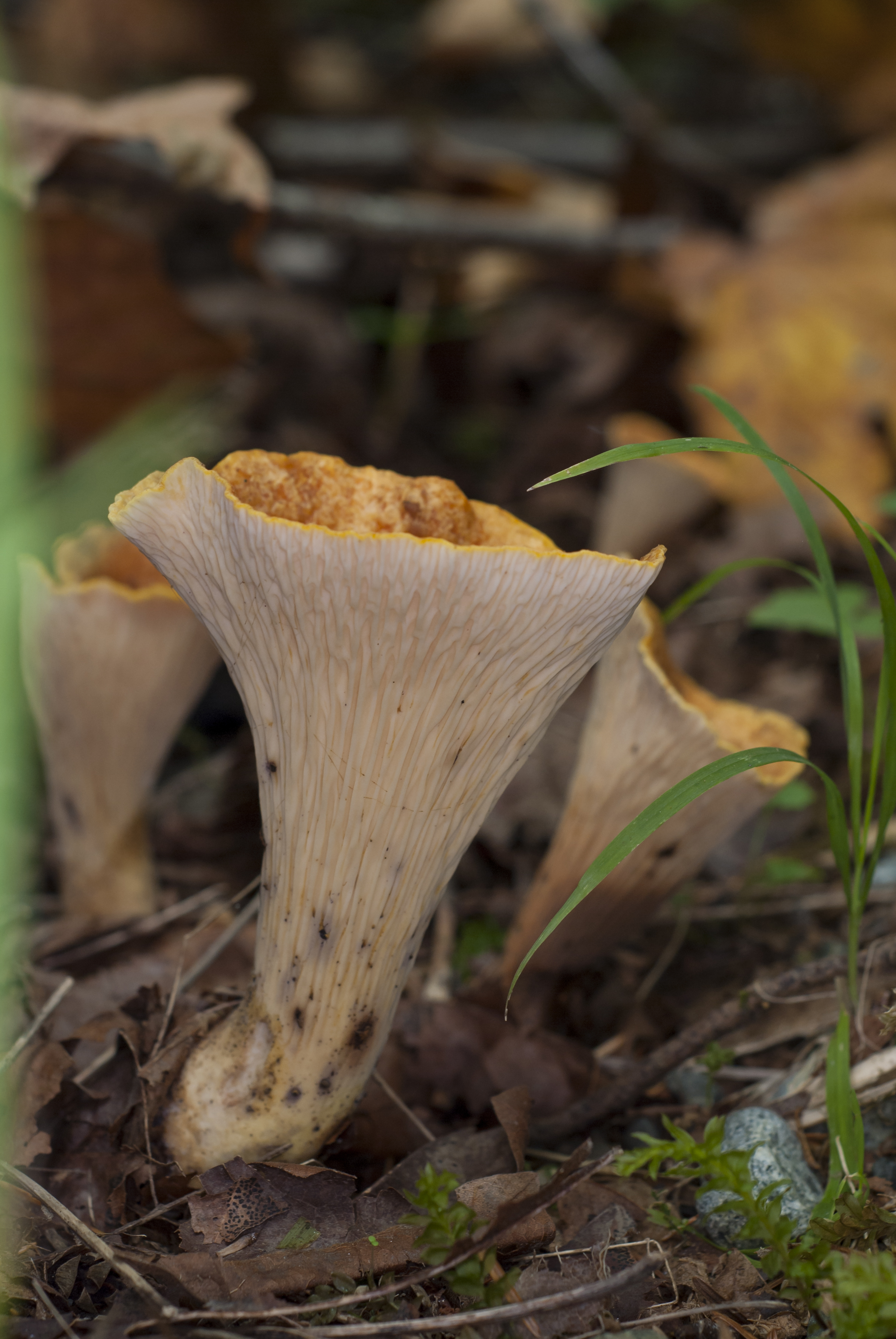
This mushroom (Turbinellus floccosus) is poisonous, in contrast to other highly prized chanterelles.
It is an E3 mushroom because it is often gathered, prepared, and eaten in nations like Mexico and Nepal.
They can result in digestive problems, including diarrhea and vomiting if they aren’t prepared properly, and occasionally even if they are.
These different types of mushrooms feature long, creamy gills and brilliant orange caps.
The mushroom’s inverted shape gives it the appearance of a vase. It seems scaly because of the lengthy scales that extend down the stem.
16. Yellow Stainer
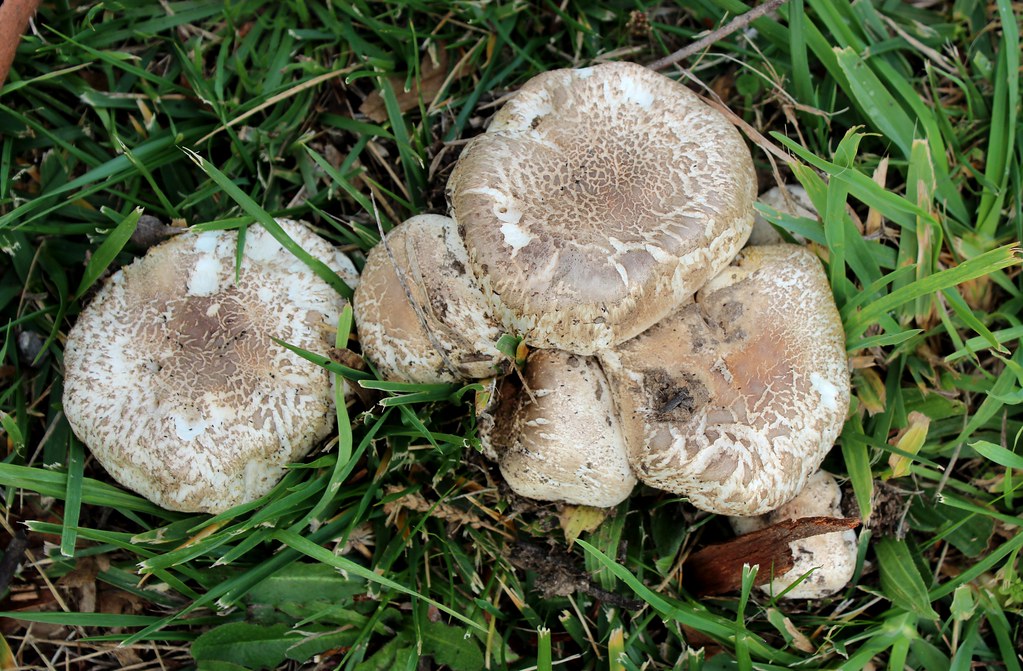
To recognize and stay away from this mushroom, cut it open or remove it from the ground.
When you do this, the wounded area of the mushroom will take on a yellow hue.
The entire mushroom will become golden when it is cooked. It also starts to smell bad.
One of the less dangerous mushrooms is the Yellow Stainer (Agaricus xanthodermus), also on this list of the different types of mushrooms.
It won’t affect some people, while others will experience gastric discomfort. Up until you notice the yellow tint, it resembles button mushrooms.
17. Inky Cap

The inky cap mushroom is possibly just as poisonous as an E2 mushroom (Coprinopsis atramentaria). Never mix this mushroom and alcohol.
In all other circumstances save those in which alcohol would be consumed; the mushroom is edible.
Increased heart rate, stomach pain, and tingling in the limbs are all brought on by alcohol. As a result, it is occasionally used to treat alcoholism.
Tippler’s Bane is another name for the mushroom on this list of the different types of mushrooms because of this.
18. Enoki Mushroom

In recent years, enoki mushrooms (Flammulina velutipes) have gained popularity in the West.
They have the name Enokitake and originate from Asian cuisine. The majority of the mushrooms are brown or white.
One of the different types of mushrooms, Enoki mushrooms, cultivated in the wild, are frequently shorter and darker.
These fungi have tall stems. They develop close clusters around one another and have little caps at the end.
Meanwhile, they go well with Asian meals since they have evolved to work together for so long.
The mushrooms work well in soups and noodle meals despite being slippery. Enoki mushrooms must be picked with caution when found in the wild.
They resemble Autumn Skullcap or Deadly Galerina quite a bit. In a subsequent section of the essay, we discuss this lethal species.
19. Lion’s Mane
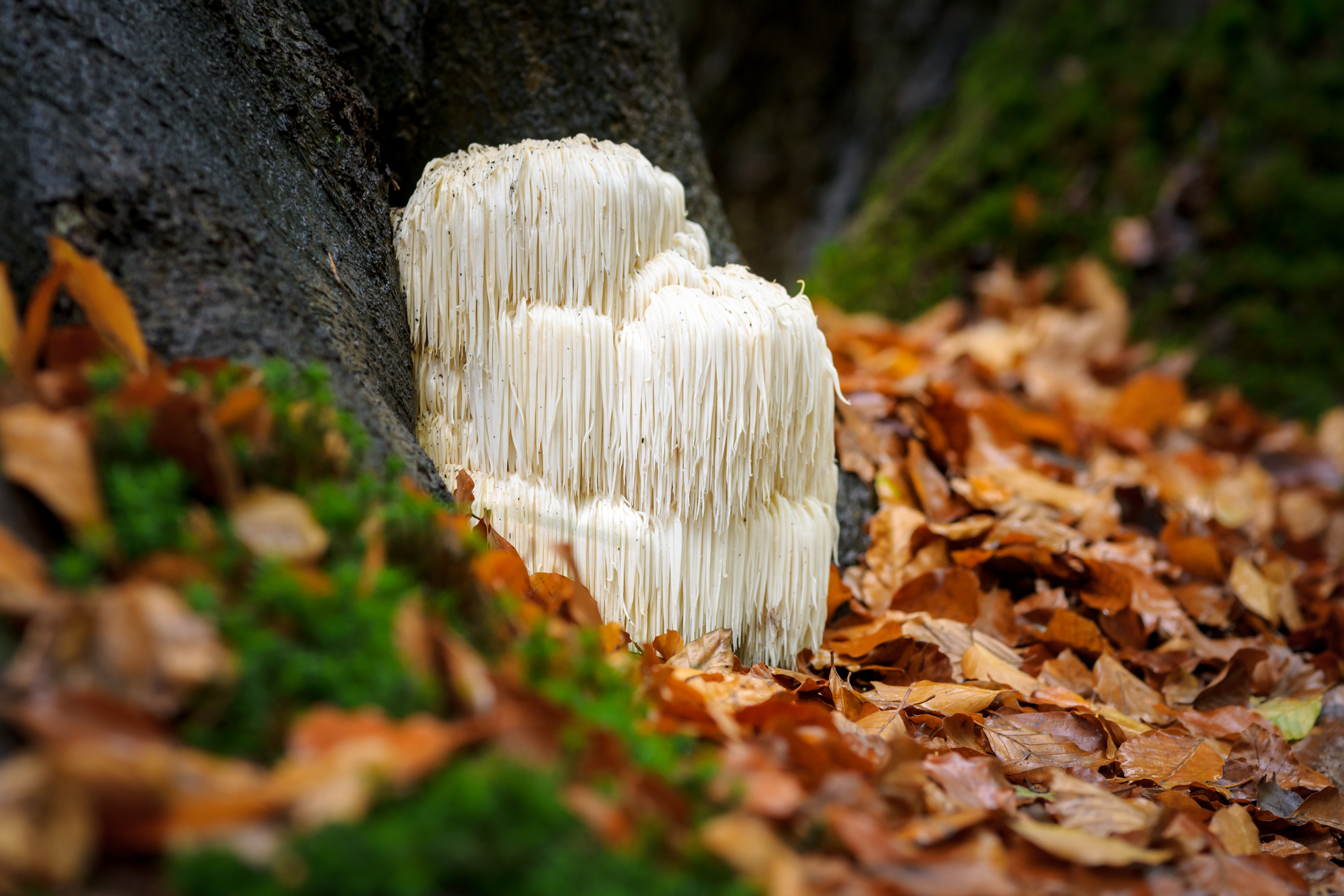
The growing pattern of the Lion’s Mane mushroom (Hericium Erinaceus) makes it stand out from practically all other types of mushrooms.
Its gills initially develop into long, teeth-like structures before becoming a sizable, “hairy” mass.
Some of the most well-known medical effects in the world can be attributed to them.
They are supposed to improve concentration and mood, preserve the health of your brain and assist your immune system.
They also lessen bodily inflammation. Their phytochemicals are the primary source of these qualities.
The flavor of these mushrooms is distinctly lobster-like. They are becoming increasingly well-liked among chefs thanks to their distinctive palate, especially at American culinary schools.
20. Chicken of the Woods

The Chicken of the Woods mushroom (Laetiporus sulphureus) looks like it belongs in a fantasy book.
These mushrooms look less like mushrooms and more like a fungus that has grown out of control.
They are, nonetheless, actual mushrooms and one of the fascinating ones.
As implied by the name, this mushroom has a chicken flavor. Some people claim that it tastes more like lobster.
While not everyone likes the flavor profile, it nearly often looks like once-cooked meat.
As a result, it frequently works well as a meat alternative for vegans and vegetarians.
Chicken of the Woods, also one of the different types of mushrooms, can be recognized by sight alone.
On the outside, it is frequently ringed with brilliant yellow. Typically, the portion of the mushroom closest to the center is brilliant orange.
21. Gypsy Mushroom

The Gypsy mushroom (Cortinarius caperatus) isn’t as prevalent as the other different types of mushrooms we’ve discussed.
They only naturally grow in the earth’s northern latitudes, which is one factor in this. For instance, they are offered for sale in nations like Finland.
You must wild-harvest them in other nations along a similar line of latitude. When consumed uncooked, gypsy mushrooms don’t have a wonderful flavor.
Until they are cooked, they are frequently bitter. The flavor of the cooked mushrooms will be faint.
Moreover, Gypsy mushrooms are rarely found in sufficient quantities to make an entire dish.
However, their mild flavor pairs well with various other mushrooms to add bulk to a dish.
22. Chanterelle Mushroom

Another extremely well-liked variety of mushrooms on this list of different types of mushrooms is the chanterelle (Cantharellus cibarius).
Bright yellow chanterelles are the most well-known kind. These mushrooms are highly sought-after in gastronomy because of their peculiar flavor.
Because of their popularity, mushrooms are now considered a culinary delicacy on par with truffles. Their flavor profile veers somewhat between fruity and spicy.
They are frequently cooked with fat, such as butter, to accentuate their rich flavor.
When gathering chanterelles, exercise caution. The False Chanterelle and the Jack O’Lantern mushroom have remarkably similar looks.
They rarely, nevertheless, are poisonous enough to result in death. They will instead result in excruciating cramps and diarrhea.
23. Shimeji or White Beech

Shimeji mushrooms (Hypsizygus marmoreus) can take on a variety of shapes, making it more difficult to identify them while foraging.
They frequently form clumps that resemble Enoki mushrooms. They will, however, be more considerable in cap size and have wider stems than Enoki.
Before eating these edibles on our list of the many different types of mushrooms, they must be cooked.
They are E2 mushrooms that, when consumed uncooked, can upset the stomach.
The harshness of the mushrooms fades after thorough cooking, leaving behind a nutty, umami flavor.
After cooking, their texture still maintains a robust and crunchy quality.
East Asian nations are where these mushrooms are most frequently cultivated and consumed.
For instance, they are frequently utilized in Japanese cuisine because of their umami flavor.
24. Porcini Mushroom
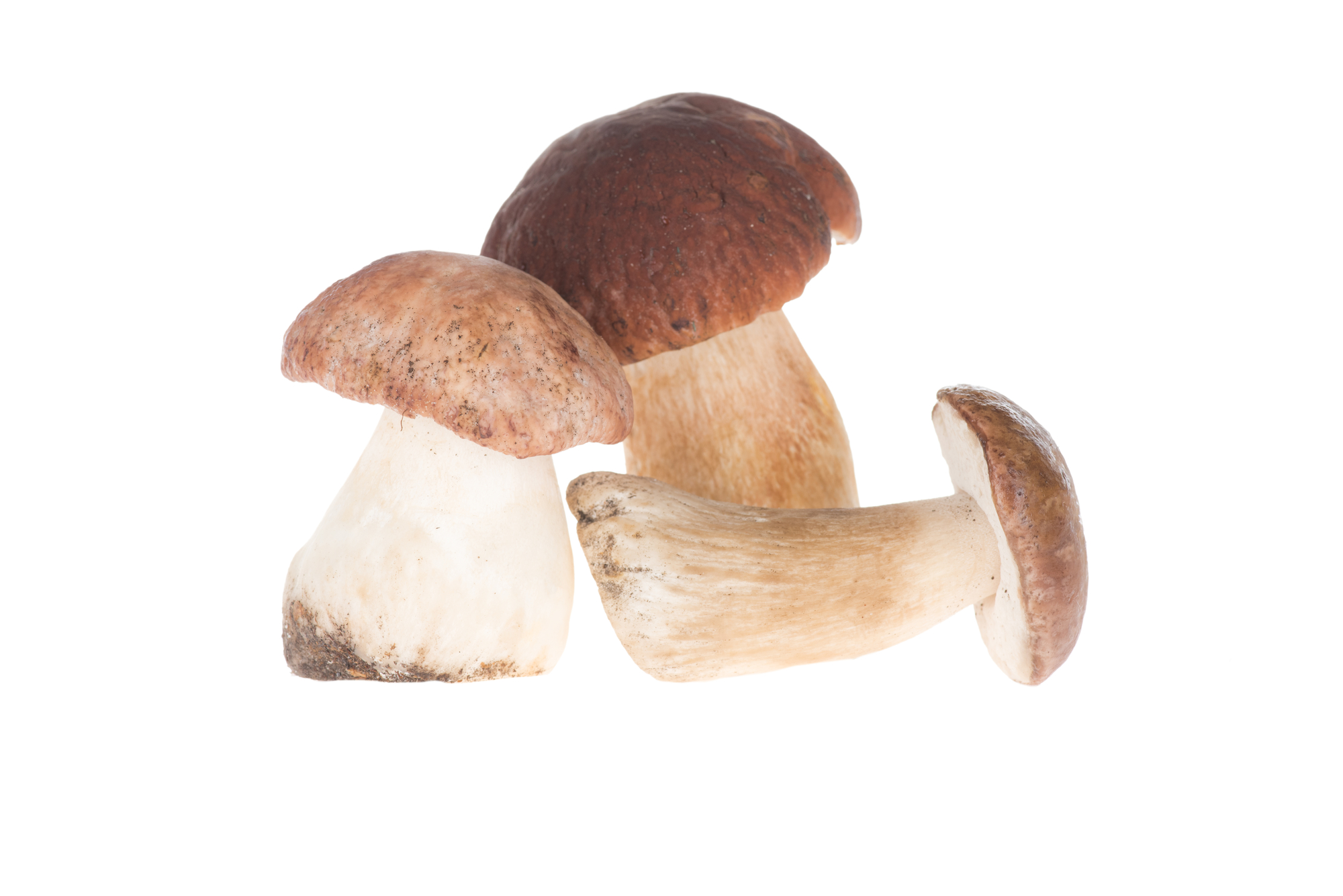
Still, with the different types of mushrooms, the Penny Bun or Bay Bolete mushrooms are other names for porcini mushrooms (Boletus edulis).
These are well-known and well-liked mushrooms worldwide due to their widespread occurrence in the Northern Hemisphere.
Since they must establish symbiotic relationships with tree root tissue to thrive, these mushrooms are typically found in forests and tree plantations.
The months of summer through October are when the mushroom fruiting body grows.
These mushrooms have a moderate flavor and can be cooked, dried, or eaten raw.
They are frequently included in soups, spaghetti, and risotto. One of the few pickled fungi in the world is also sold here.
25. Shiitake Mushroom
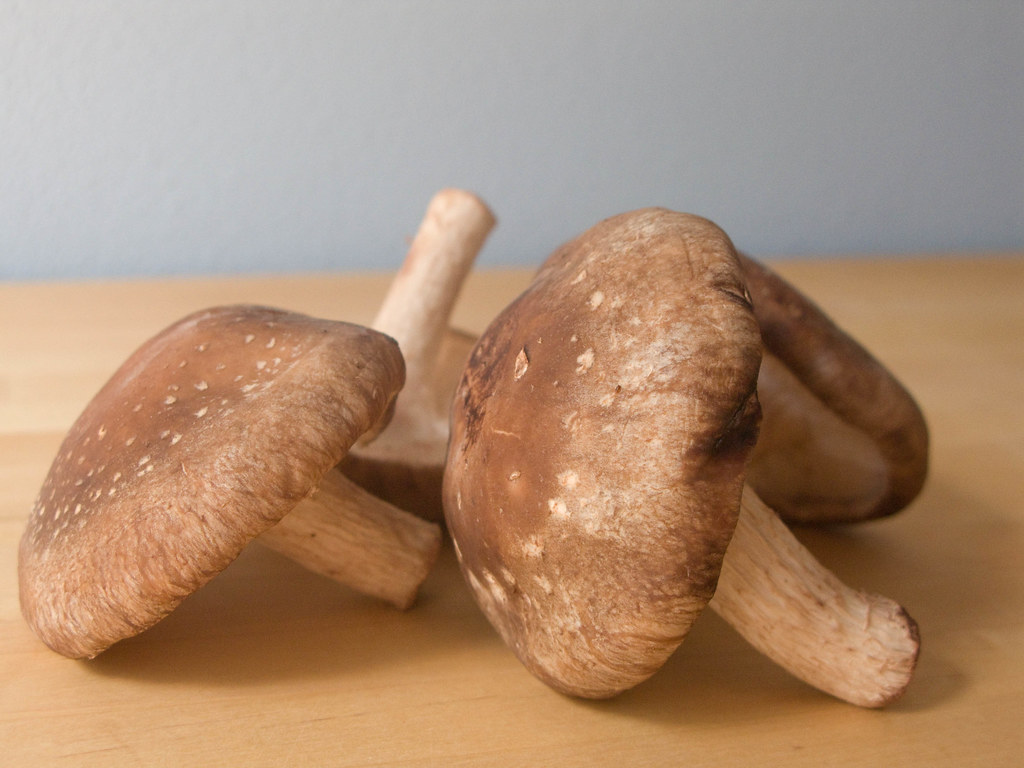
China and the rest of East Asia have long been cultivating shiitake mushrooms (Lentinula edodes).
However, Western chefs have only recently started to use them frequently.
Once cooked, the mushrooms have a velvety texture and an umami flavor. The majority of these mushrooms are sold dried.
These mushrooms’ stems are more durable than the mushroom cap.
That is why they are frequently thrown away. You can cook them longer than the caps if you don’t want to waste them. They will then become chewier in texture.
Asian traditional mushrooms include the Shiitake mushroom as a therapeutic fungus.
In humid environments, shiitake mushrooms can be found on deciduous trees. There are a lot of mushrooms that resemble this.
26. Maitake Mushroom
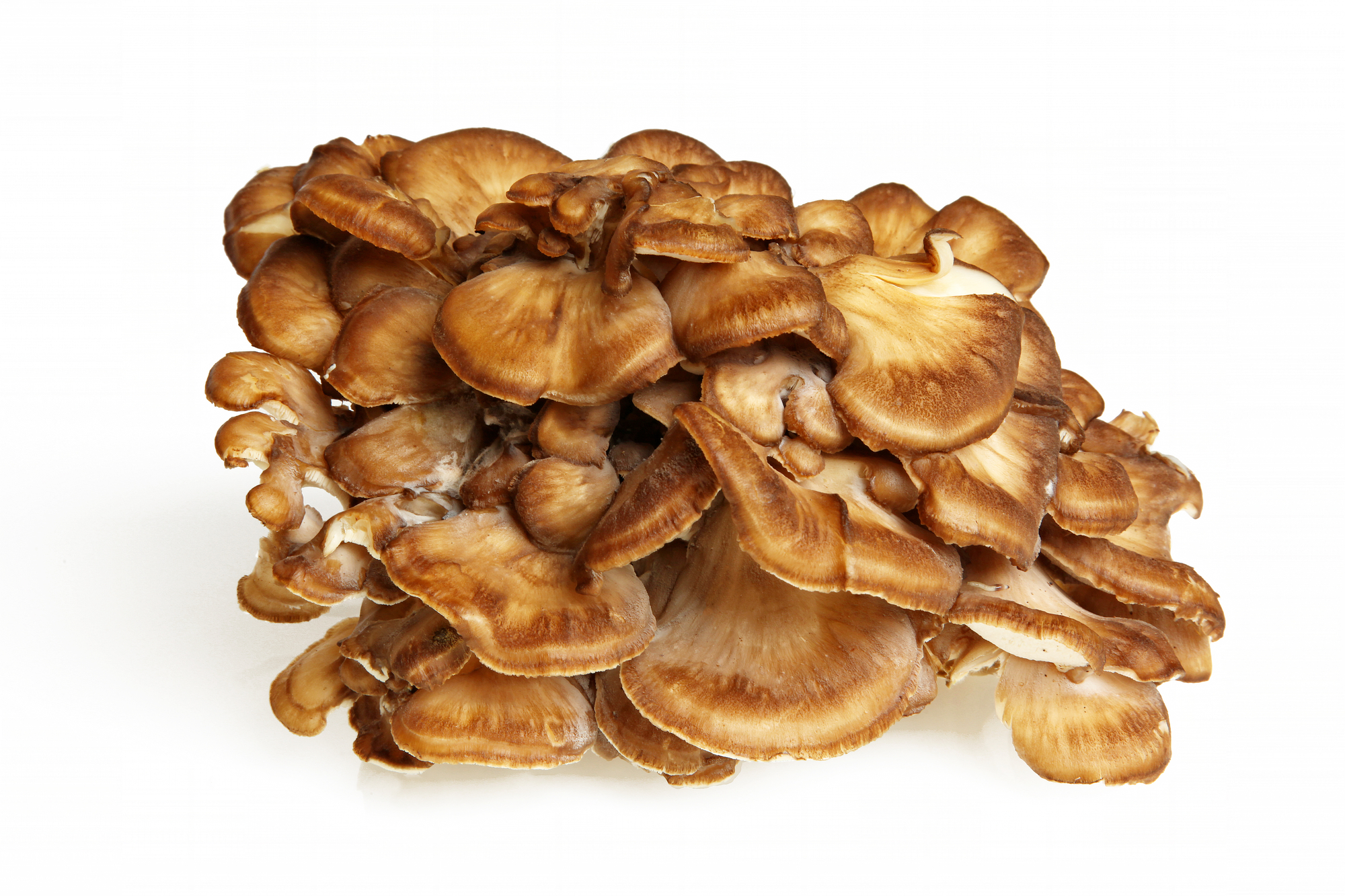
Our list of the different types of mushrooms is incomplete without this form of maitake mushrooms (Grifola frondosa), which is peculiar.
They grow around tree bases in ribbon-like stacks. They are common in areas with oak trees. We’ve already eaten chicken from the woods.
Hen-of-the-Wood is the common name for this fungus. They are frequently present from late summer to early October.
Even when eaten raw, maitake has a somewhat sensitive feel. Additionally, they are arranged along the main body of the mushroom in a manner like a leaf.
These mushrooms are both excellent when cooked and safe to consume raw.
Maitake is frequently prepared as tempura in Japanese culture, and they don’t have any hazardous clones.
Some closely related species, such as Meripilus sumstinei, have similar appearances. They are more rubber-like in texture and stain black. They are still edible, though.
27. Reishi Mushroom
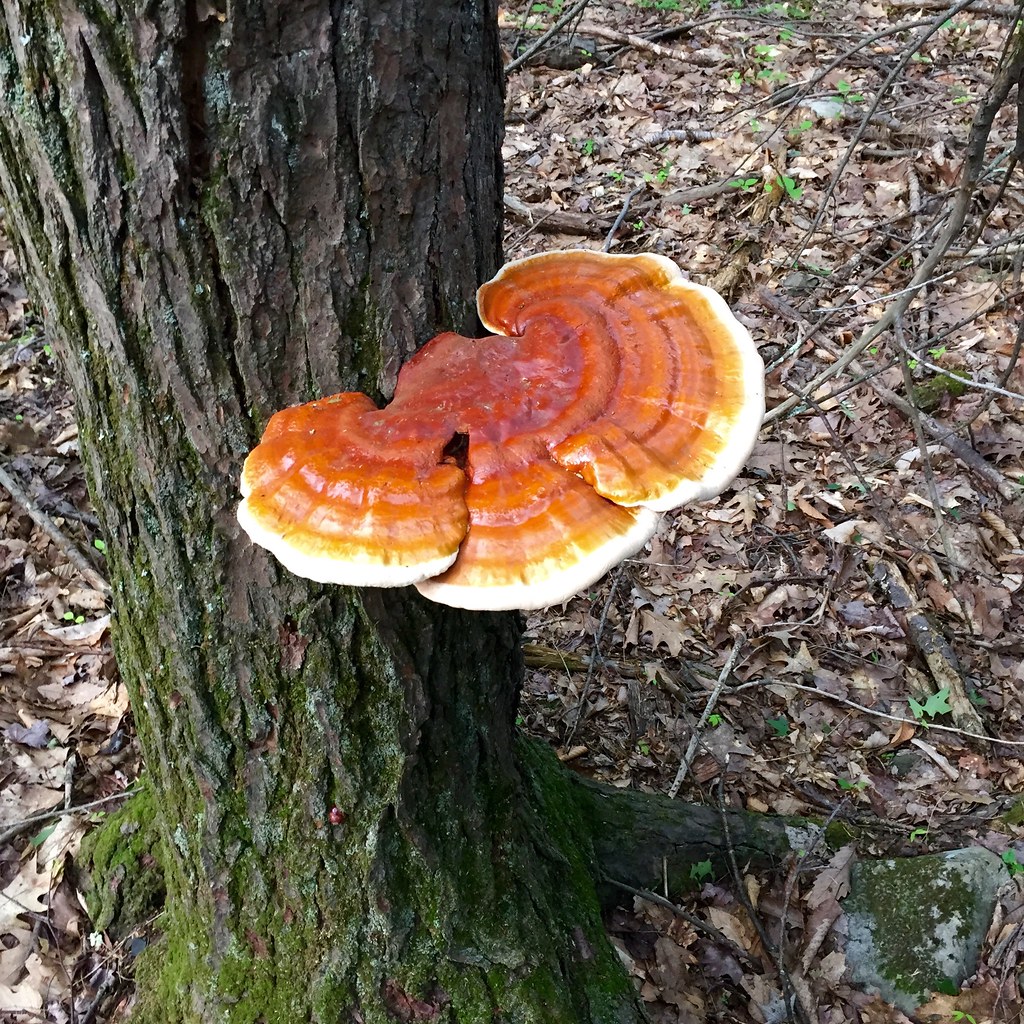
Reishi mushrooms (Ganoderma lingzhi) typically sprout two to three feet from the ground from a tree’s trunk.
Any shape and life stage of them is edible. They are, however, one of the different types of mushrooms typically taken as a powdered supplement.
That’s because, according to traditional Chinese medicine, these mushrooms could potentially grant immortality and aid with memory development. This mushroom has less appeal in modern medicine.
However, researchers have discovered that reishi mushrooms can benefit cancer patients while they are undergoing therapy.
This is because they are rich in essential phytochemicals that promote your general health. The Reishi mushrooms round the tree trunk’s base in a fan-like pattern.
28. Black Trumpet Mushroom
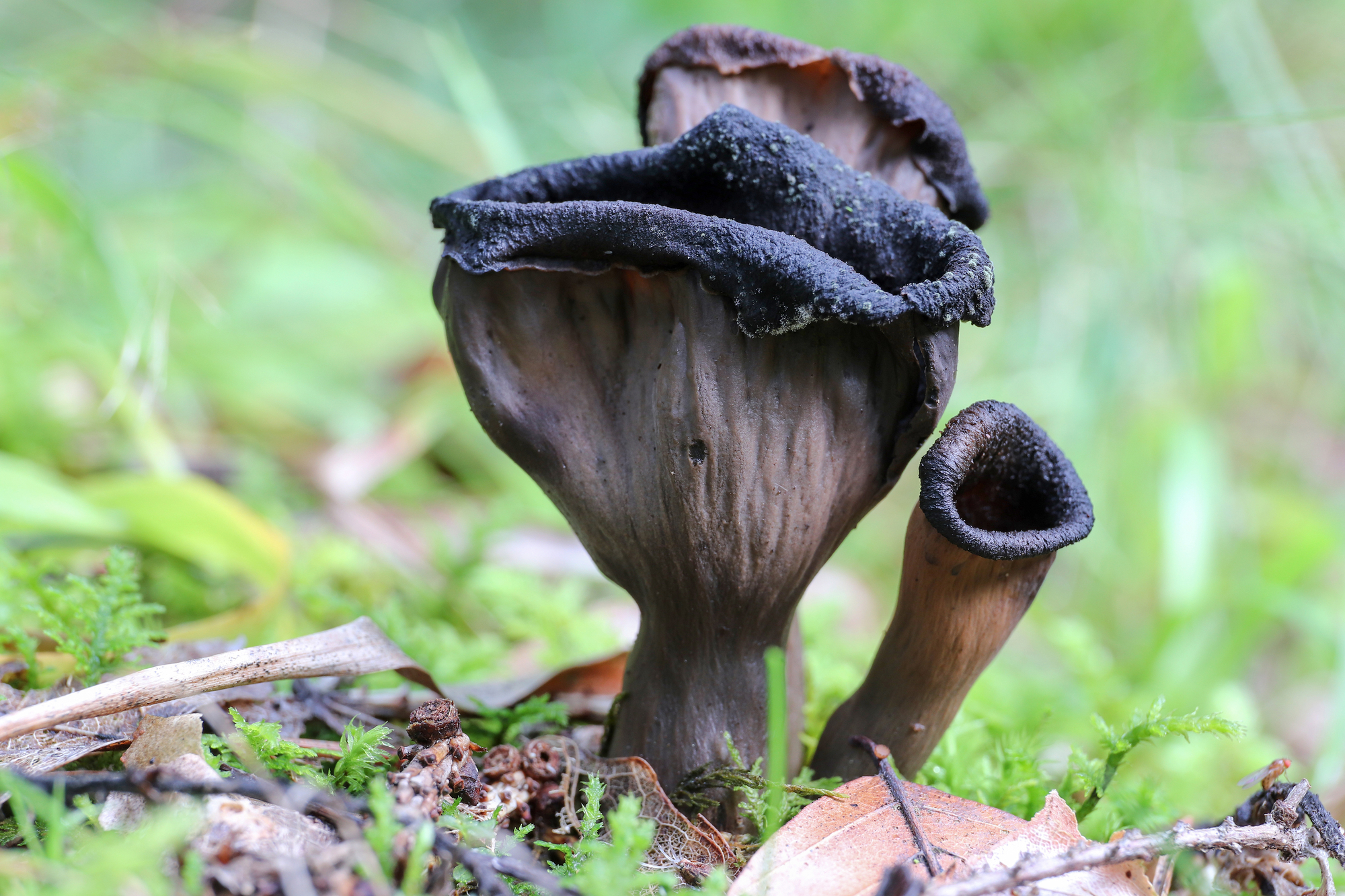
Black Trumpet Mushrooms (Craterellus cornucopioides) resemble a trumpet and are shaped like a typical chanterelle.
They are simple to recognize, thanks to their inky black hue. Due to the way they appear to be miniature trumpets emerging from the underworld, it also gave origin to the phrase “trumpet of the dead.”
This mushroom has a wide range of distribution. It naturally flourishes in the forests of Europe, North America, Japan, and Korea.
They favor wet areas under broad-leaved trees like beech and oak. Additionally, they favor calcareous soil, and from June to November, they bear fruit.
This type of mushroom is exquisite compared to other different types of mushrooms.
Although they are often dried, you can consume them fresh and cooked. Upon drying, their flavor profile changes to black truffle notes.
29. Wood Blewit
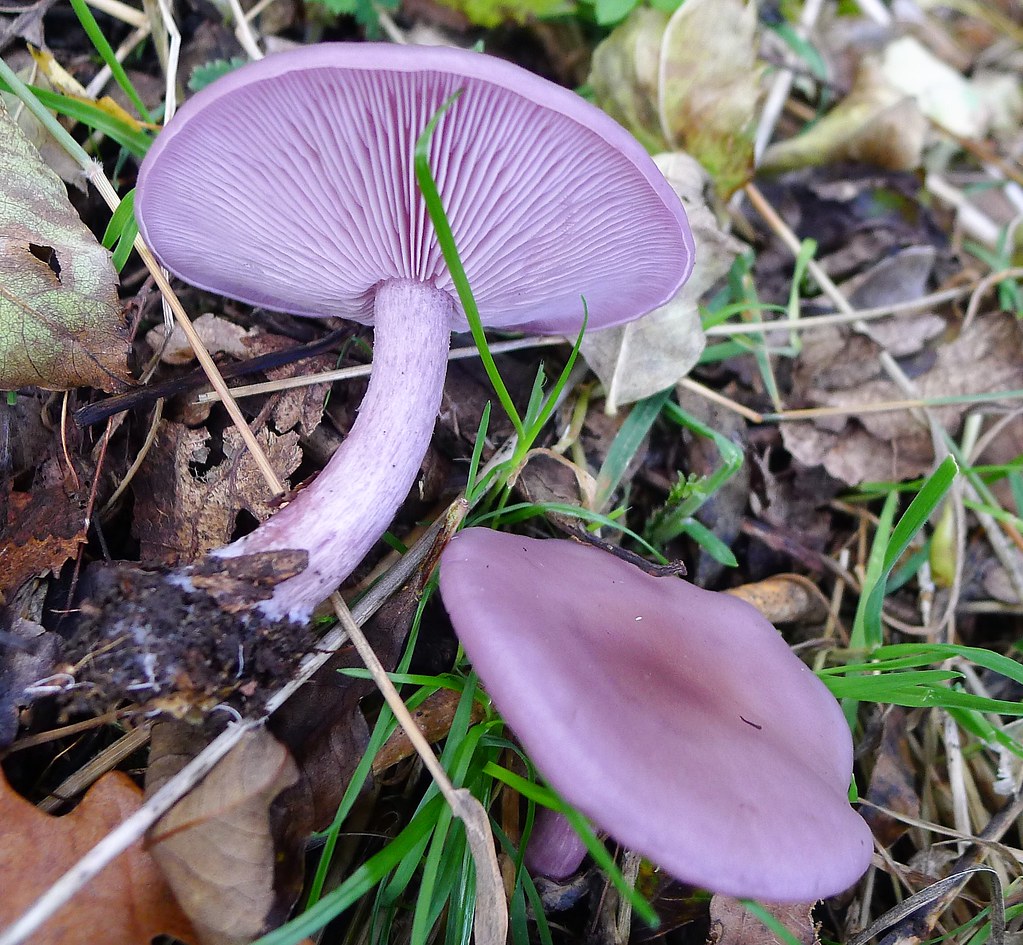
Although the Wood Blewit mushrooms (Clitocybe nuda) can induce allergic reactions in certain people, they are classified as E2 mushrooms because of this.
Because of this, only a few European nations farm these mushrooms extensively.
Most of the time, eating the mushroom uncooked will cause allergic responses. Even after they have been cooked, they can still induce reactions.
So, if you want to eat them, we advise starting with small amounts. We are yet to discuss more different types of mushrooms; don’t stop reading!
30. Morel Mushroom
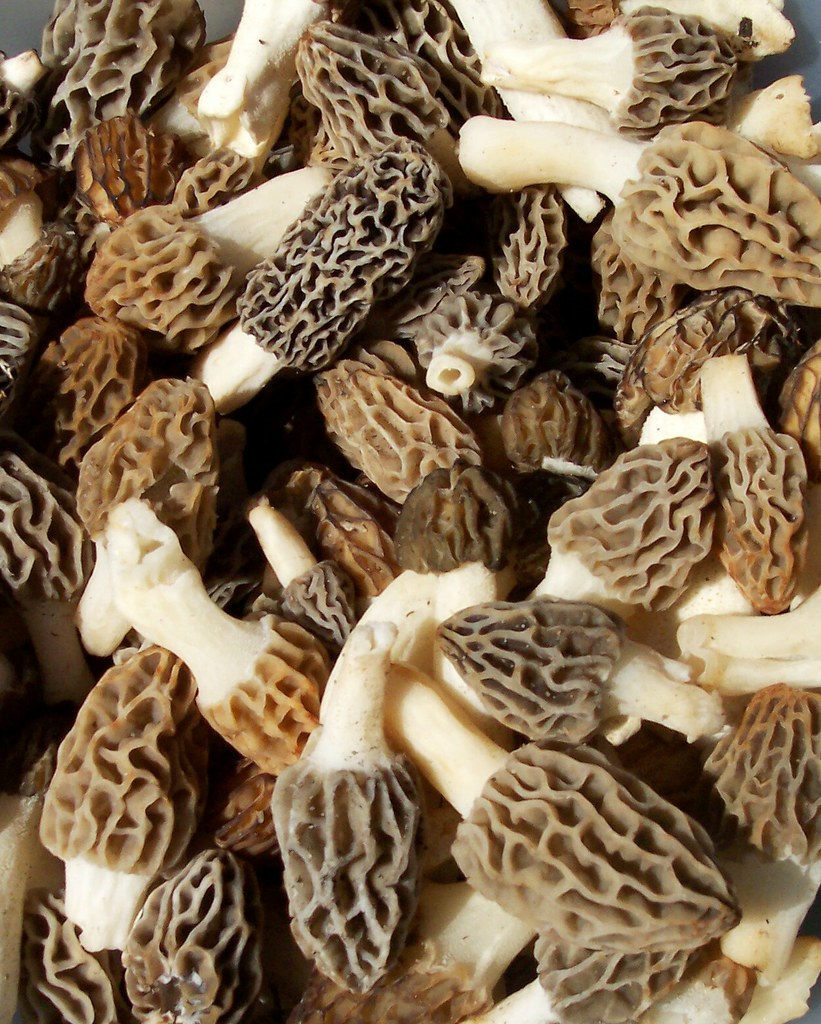
The morel is one of the most valuable edible mushrooms (Morchella esculenta). They must be gathered from the wild because they are difficult to cultivate.
Morels are a particularly lucrative commodity for foragers that supply fine dining establishments.
Families of mushroom hunters frequently return to their own “morel places” each year to gather these mushrooms. The flavor and texture of morels are renowned.
They have an earthy and nutty flavor. They have a soft, meaty texture after being cooked.
Further, they also have a distinctive appearance. The mushroom cap almost resembles a spongy reef or a wrinkled honeycomb.
31. Matsutake
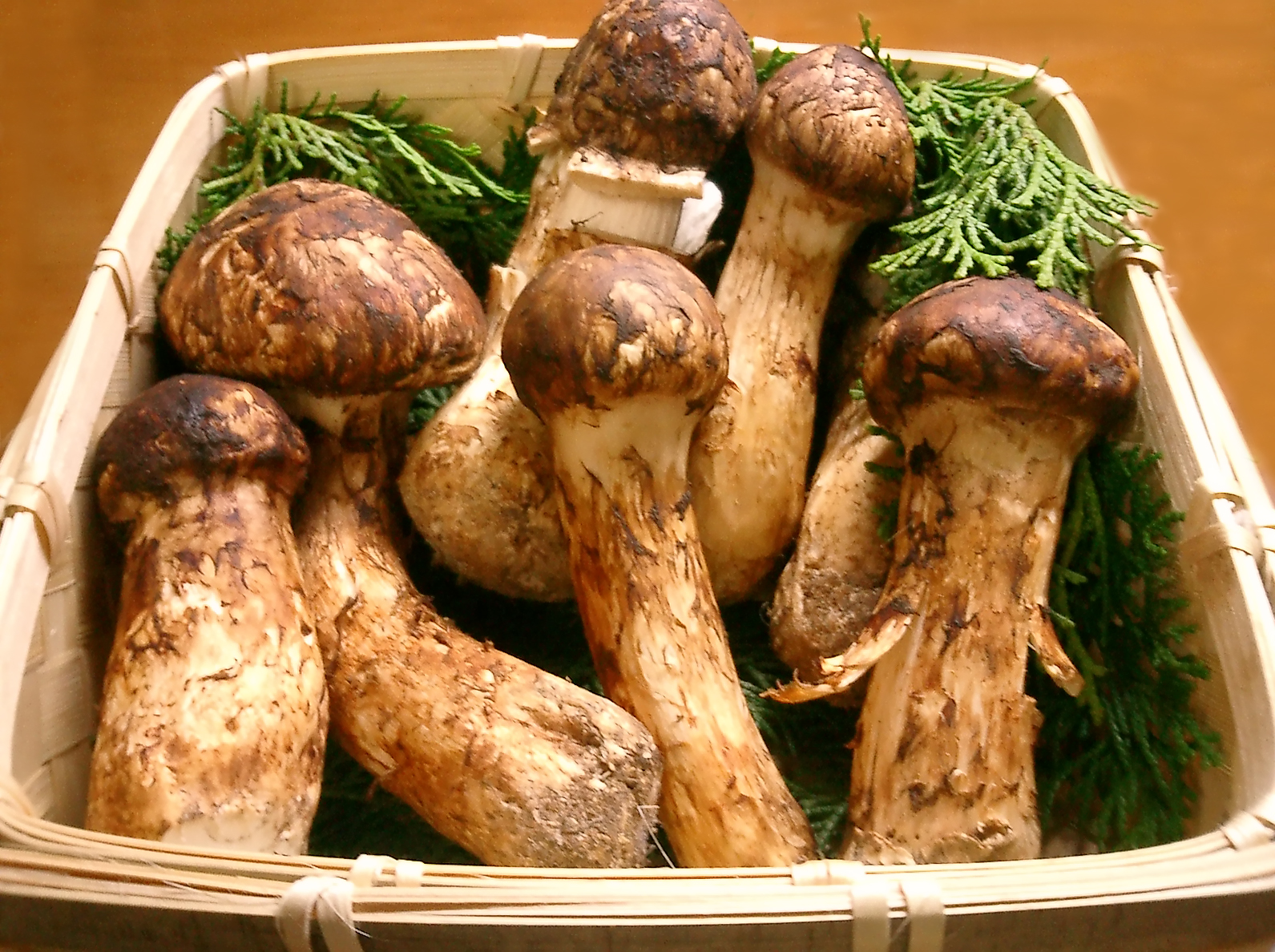
Matsutake mushrooms (Tricholoma matsutake) may resemble other common different types of mushrooms in appearance. They are, however, a highly valued and uncommon mushroom species.
They typically flourish in eastern nations. Moving on, they feature a small cap and a thick, tall stem.
These mushrooms have a somewhat spicy scent that makes them easy to recognize. In recent years, the Matsutake mushroom has increased in value.
In wooded environments, they develop symbiotic interactions with conifers.
Unfortunately, it has become more difficult than ever to find these mushrooms in the wild due to pine parasites and ongoing deforestation.
32. Cauliflower Mushroom
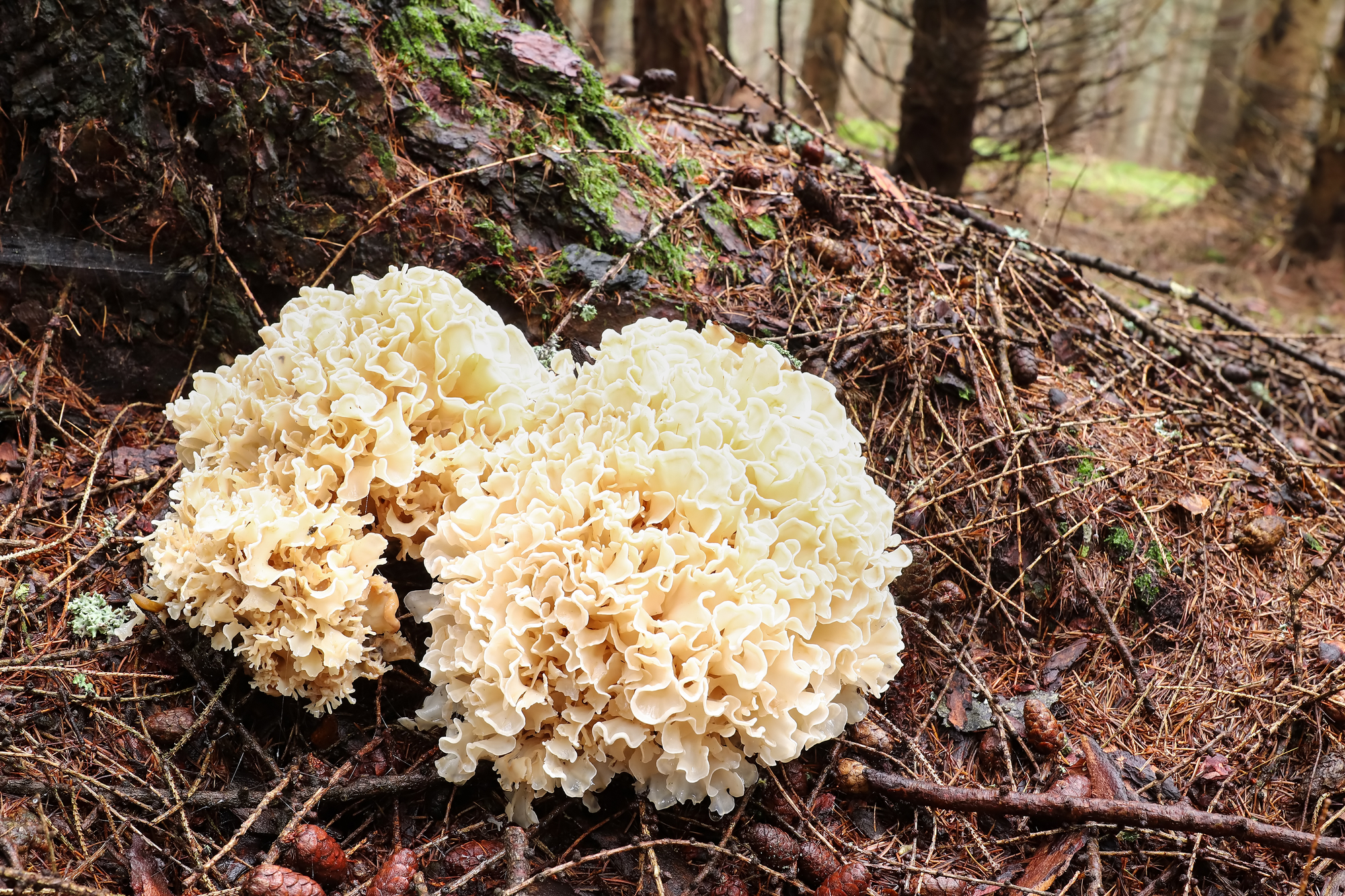
One of the mushrooms that makes it challenging to define the form of a mushroom is the cauliflower mushroom (Sparassis crispa).
Despite their name, they resemble cauliflower rather than mushrooms. Additionally, they are challenging to clean because of their size and deep crevices.
Although they could be tedious, the flavor makes them worthwhile. They taste like hazelnuts and have a lovely aroma.
They frequently grow around the bases of pine trees and may reach weights of several kilograms.
33. Charcoal Burner Mushroom

This fungus’s name comes from how it resembles a charcoal burner. These are among the most often seen wild mushrooms on the continent since they grow profusion across most of Europe.
The mushroom is extremely adaptable because its cooked cap is soft and crumbly.
Additionally, it is simple to cook with a range of foods because of its mild, nutty flavor. If you are looking for different types of mushrooms, continue reading!
34. Giant Puffball

The Giant Puffball mushroom (Calvatia gigantea) has many applications and a remarkably identifiable appearance.
They resemble balls and are bright white. They can become enormous, reaching 44 pounds (20 kg).
They are used to cover wounds because they contain calvacin and mucoprotein.
The mushroom is edible, but you can only eat it when it is still young. The mushrooms on this list of the different types of mushrooms must be completely white.
The spores become toxic when the mushroom’s flesh turns from white to yellow and brown. Because of this, smaller mushrooms are more frequently utilized in cooking.
35. Crab Brittlegill
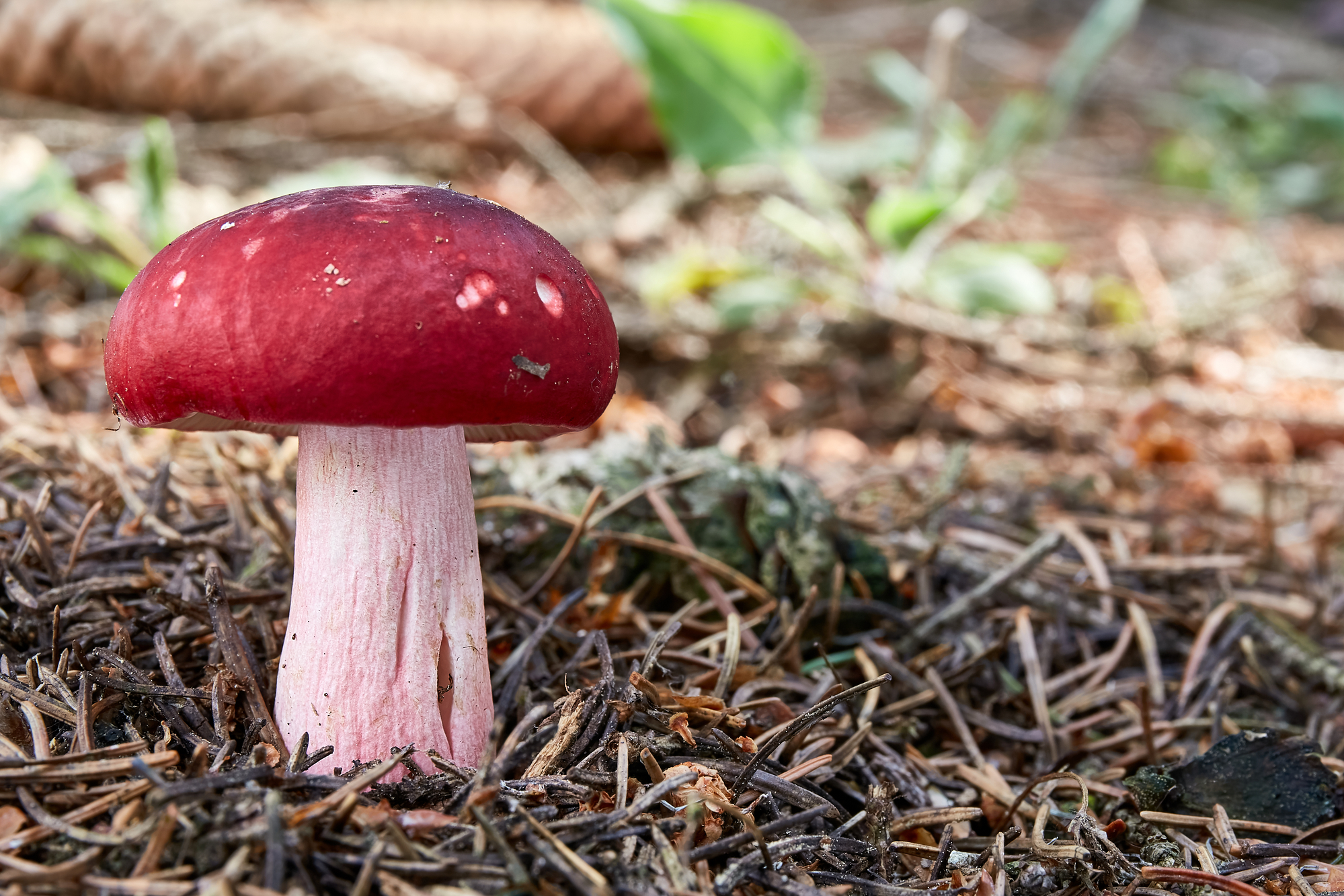
One of the edible mushrooms most frequently seen in the Russula genus is the crab brittlegill (Russula xerampelina).
Its common name comes from the smell of fish it emits before and after cooking.
Although its flavor is fairly modest, its pungent odor may prevent it from being used in all but a few meals.
In coniferous woodlands all over North America and Europe, the mushroom grows.
The mushroom has a typical shape: a sturdy stem and a large, slightly rounded cap.
With white gills and stems, the upper side of the cap is vivid red and deep maroon. It is one of the different types of mushrooms you should know!
36. Dryad’s Saddle

Another fungus that lives on tree trunks is the dryad’s saddle (Cerioporus squamous).
It is one of the different types of mushrooms that flourish in Australia, Europe, and North America.
Although they frequently require wild harvesting, they are not as elusive as mushrooms like morels.
They smell like cucumber and taste like lemon when they’re young. The mature saddle of the dryad is not poisonous.
However, due to their toughness, they are utilized much less frequently in culinary recipes.
As they get older, they also frequently develop maggots. The mushrooms feature cream and brown flecks and a cupped, saddle-like form.
37. Honey Fungus
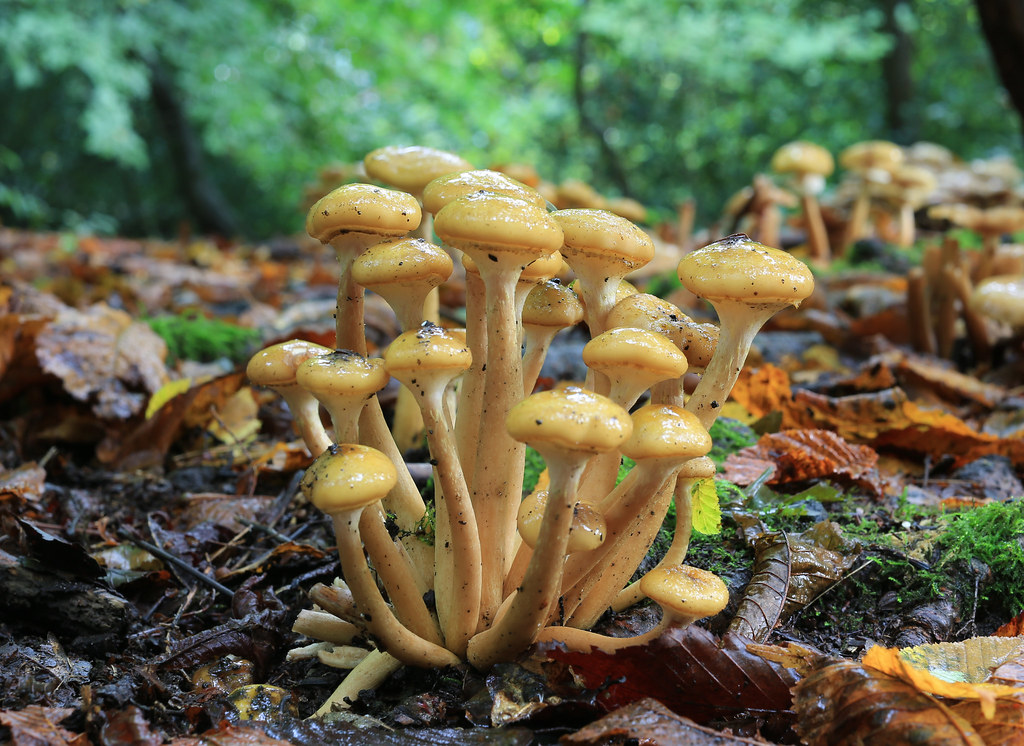
Another highly sought-after wild mushroom is the honey fungus (Armillaria mellea).
The Northern Hemisphere has a limited supply of them in the wild. As one of the few parasitic mushrooms, they are also distinctive.
They swell up at the bases of ailing trees and consume the dying ones. These different types of mushrooms frequently form clusters and have a honey like appearance.
As edible E2 mushrooms, they are edible, and these are toxic when they are uncooked.
If you take them along with alcohol, they can become even more problematic. However, if you cook them just correctly, they have a deep, nutty flavor.
38. Death Cap
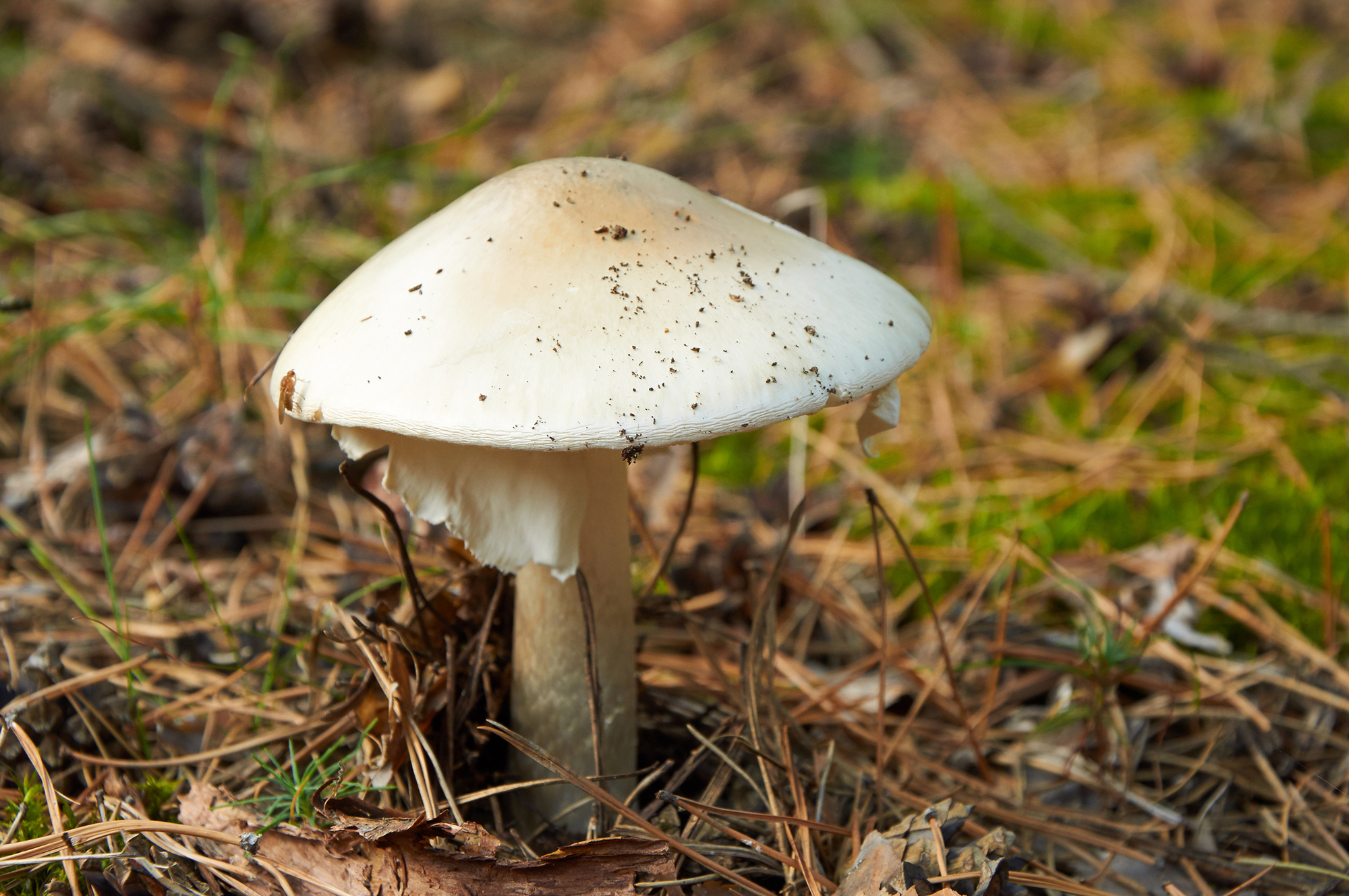
Not left out of our list of different types of mushrooms is one of the most lethal mushrooms in the world, the Death Cap (Amanita phalloides).
Even half of the mushroom qualifies as an adult in total growth. Yet it appears to be highly subdued.
They have a top that varies in color from white to light green and white stems and gills. In oak woods throughout Europe, these mushrooms commonly flourish.
As a result of the cultivation of European tree species, it is now widespread in North America.
39. False Parasol

One of the deadly mushrooms that are most frequently consumed is this one (Chlorophyllum molybdites).
They thrive in well-kept lawns and resemble edible parasol mushrooms.
Fortunately, they are not lethal. They instead cause gastrointestinal distress, including vomiting and diarrhea.
When completely grown, the mushroom has a parasol-like shape. It is mostly off-white, with a few tan dots scattered around the top.
Due to the distinctive hue of its spores, it is also known as the Green-spored Lepiota. Talk about different types of mushrooms to avoid, this is one!
40. Brown Roll-Rim
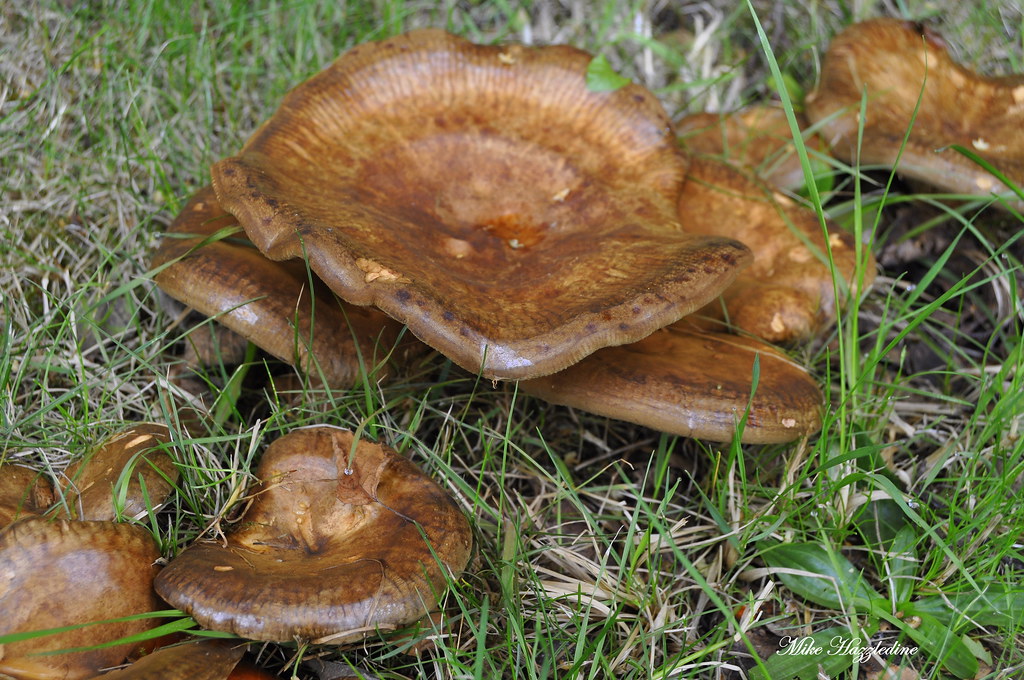
The Brown Roll-Rim mushroom (Paxillus involuts) is as its name implies. The mushroom cap is typically brown, and the stem is creamy white.
These mushrooms were mistakenly classified as E2 mushrooms up until 1944.
People recognized they upset their stomachs when consumed raw but had no adverse reactions when consumed cooked.
But more recently, it has been discovered that they can result in potentially lethal autoimmune hemolysis.
It makes your immune system assault and breaks down your red blood cells, to put it another way.
You could consume this fungus for years without realizing the harm it has caused. Acute kidney failure, respiratory failure, and physical shock are the results.
41. Conocybe
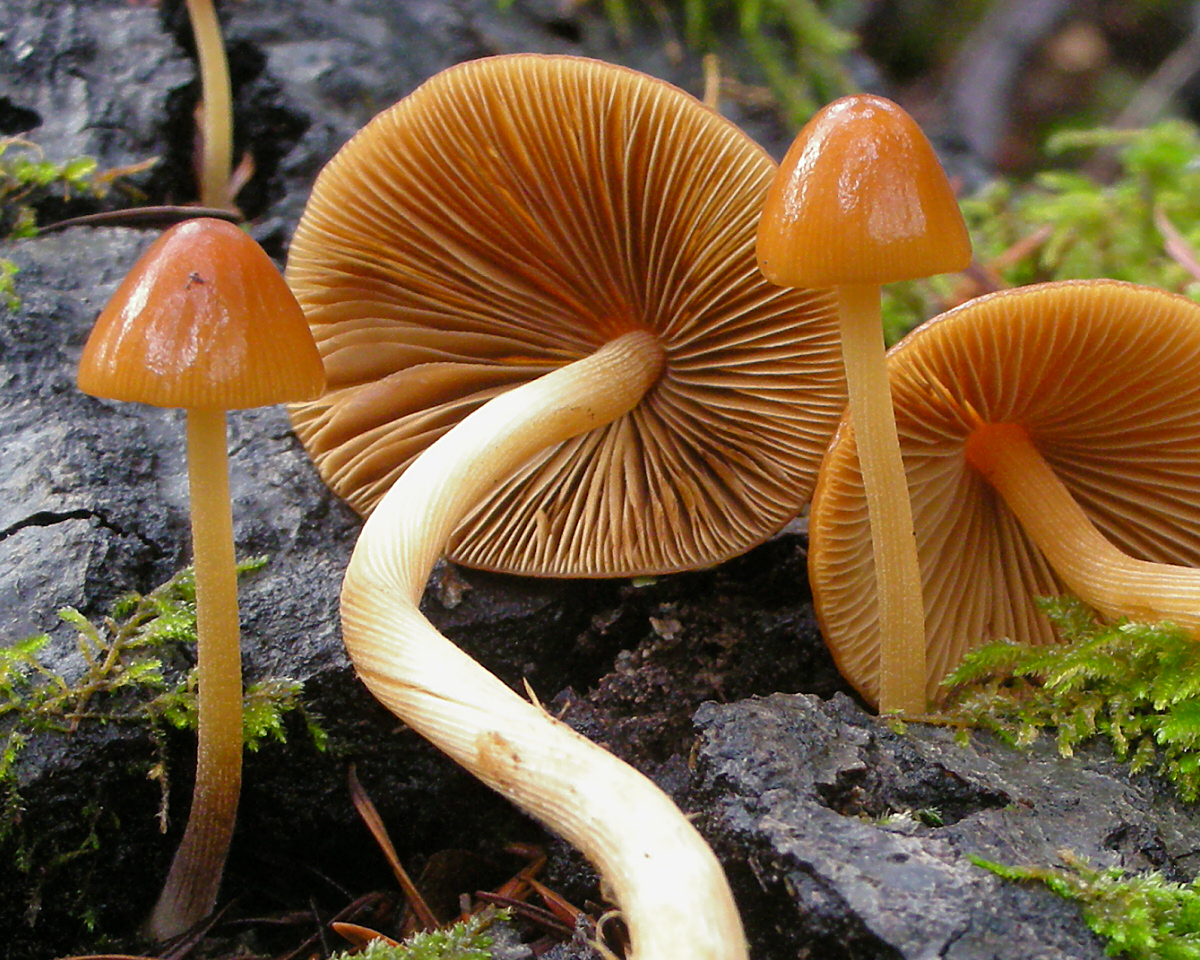
If there were ever a mushroom that looked harmless, it would be the Deadly Conocybe (Conocybe filaris).
It features a delicate cap on top of a long, thin stem. It can be recognized thanks to a ring that develops halfway up the stem.
These mushrooms grow frequently on lawns, especially in the Pacific Northwest.
Despite their seeming innocence, these are toxic mushrooms in the same family as the Death Cap mushroom.
They resemble Psilocybe genus mushrooms the most due to a similar cap.
These latter ones are hallucinogenic mushrooms, which are rarely permanently damaging.
Most importantly, they are also one of the many different types of mushrooms worldwide!
42. Elfin Saddle
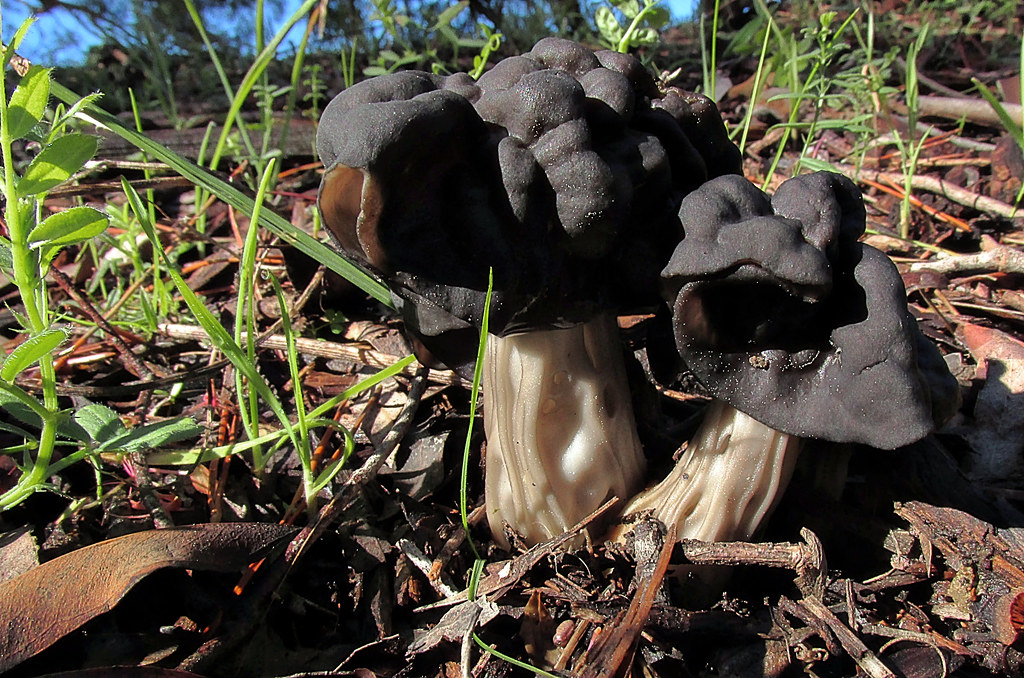
Lastly, After being cooked for a long time, the Elfin Saddle mushroom (Gyromitra infula) was supposed to be edible. However, recent years have shown it to be incorrect.
Even after being cooked, its poisons remain intact. Instead, they cause long-term harm that is not apparent for many years.
The saddle-like form the mushroom takes on as it ages is how it gets its name. It features a thick, white stem and an orange-brown crown.
It is also known as a hooded false morel due to its shape when immature. This winds up our list of the different types of mushrooms you should know!
Conclusion
There are countless different types of mushrooms and several cooking methods.
We have discussed the most well-liked ones; this list contains both safe and unsafe mushrooms, so please check for safe and edible mushrooms.
Most mushrooms above are grown under cultivation, while some are wild species. But all of them are pretty excellent.




